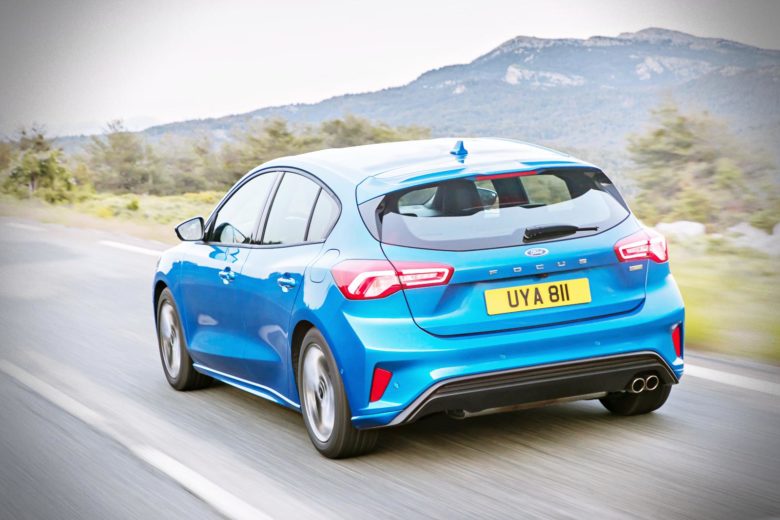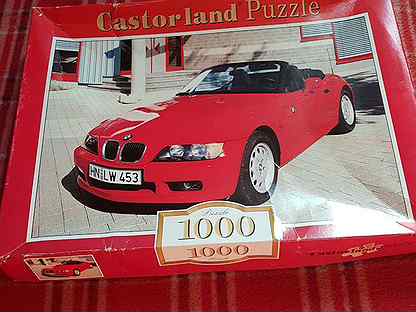
Time to shine - the new Focus
Outside in 1998. The first generation of the Focus appears on the market - the gentlemen from Volkswagen were dumbfounded, and people choked with surprise. Along the way, the car garnered over 100 awards, proudly replaced the Escort in the marketplace, and conquered the Ford sales charts. True, the car was modern - compared to others, it looked like a car from Star Trek and could be bought at a reasonable price. How much is left of this legend?
In 2004, the second generation of the model entered the market, which, to put it mildly, was different from the others. The technology was still at the level, but looking at this car in gusts of wind, you could fall on the asphalt and fall asleep - the piquant design was lost somewhere. Four years later, the car was slightly modernized in the style of Kinetic Design and is still in production. However, nothing can last forever.
First, some statistics. 40% of all new Ford sales come from the Focus. In the world, 10 million copies of this car were sold, of which as many as 120 thousand. went to Poland. You can also conduct a small test - stop at an intersection near the Focus, preferably a station wagon, and look at it through the side window. Exactly 70% of the time, a guy in a tie will be sitting inside, talking on a “cell phone” and looking through a stack of thick Quo Vadis papers. Why? Because almost ¾ of the buyers of this fleet model. After all, the manufacturer would not be doing very well if it did not have Focus in its offer, so the design of the new generation was accompanied by a slight stress. Although no - for engineers and designers it was a matter of life and death, because in the event of a misfire, they would certainly be burned at the stake. Then what did they create?
They stated that the key to strong sales was the car's globalization and that it would be the first vehicle in Ford's offering with this approach to the world. But what does this really mean? The new Focus will simply appeal to everyone, and if it is so global, then more expensive technologies can be used in it, because they will become profitable. At first it all started with the appearance. The floor slab is taken from the new C-MAX, and the bodywork is cut to express movement even when the car is stationary. In general, quite a fashionable move by many manufacturers lately. The exception is VW Golf - it stands even when driving. The new generation Focus has grown by 21 mm, including an 8 mm wheelbase, but has lost 70 kg. So far, the Focus hatchback reigns supreme on the posters, but you can buy it in a station wagon, which at first glance I would take for a larger Mondeo, and in the sedan version - it seems to be quite original, provided that you don’t meet Renault Fluence on the road earlier . Interesting - in the hatchback, the lights in the rear pillars disappeared, which until now were something of a mole in Marilyn Monroe. Why have they now gone to a "normal" place? This is an example of Ford's globalization - they are for everyone when they are rebuilt. The problem is that they look like scrambled eggs, and you need to give people time to get used to their strange shape. However, I also mentioned more expensive equipment - here the manufacturer really has something to be proud of.
There are things you can't see - for example, high-strength steel, which makes up 55% of this car. You can buy others for it - Focus is considered a popular car, but until recently, some elements of its equipment could only be found in cars too expensive even for Madonna. Meanwhile, up to 30 km/h, the car stop system can follow the collision risk detection. However, this is nothing - blind spot sensors in mirrors can already be found in cheap brands, but a system that recognizes road signs is easier to find in the flagship models of Mercedes, BMW or Audi. True, it does not work perfectly, and will not warn of speed limits in the city, because the marking of the built-up area for it is as abstract as the works of Lucio Montana - but at least you can have it. As an option, there is even a lane control system. Thanks to her, the Focus itself smoothly adjusts its track, although it must be admitted that the system itself is quite demanding and sometimes goes astray even in the case of clear markings on the road. The parking assistant, on the other hand, works flawlessly. Just start it, release the steering wheel and go to conquer the "coves", because the car will park in them automatically - you just need to press the "gas" and "brake". Interestingly, sensors can also be installed in the cabin to detect fatigue on the driver's face. If the machine determines that something is wrong, it turns on the warning light. When the driver continues to move forward while he is awake, then the horn comes into play. Heated windshields, tire pressure monitoring, or automatic high beams are nice and rare additions, but given the technology involved, they still seem like inventions from the Paleozoic. But what can you get in the base Ford?
The answer is very simple - nothing. However, that doesn't mean he's bad. The cheapest version of Ambiente is actually aimed at fleets that already found it too richly equipped, because the merchant cannot be spoiled. There is no air conditioning, but there is an anti-slip system, 6 airbags, a CD / mp3 radio tape recorder, and even an electric windshield, mirrors and an on-board computer. All this for PLN 60. Each version is also equipped with the EasyFuel system, i.e. a filler cap built into the hatch - at least in this regard, refueling can be a pleasure. Air conditioning, in turn, is available as standard, starting with the Trend version, and you can count on interesting accessories in the Trend Sport with a lowered suspension and Titanium - this one already has most of the fancy gadgets. As for the cabin itself, it is perfectly soundproofed and really spacious. There's plenty of room up front, and even tall passengers in the back shouldn't complain. The tunnel, lower door and cockpit are finished in hard, cheap and easily scratched plastic, but everything else is great - the fit and materials are just great. What looks like metal is actually metal, and the skin is so pleasant to the touch that it must have been soaked with milk from Nefertiti for a week. In the Titanium, the on-board computer also deserves applause - information is displayed on a relatively large screen between the clocks and you can read almost everything about the car from it. There is one more thing - it may or may not be strange, but like every modern person, I have a mobile phone. The only problem is that the second screen that supports navigation in Focus is not much larger than in my “camera”, which means it is better to have a good relationship with the ophthalmologist. However, you buy a car to drive, not to look at the screen. In that case, is Focus still on the right track in terms of handling?
Quite right - the suspension is independent and multi-link. In addition, the front axle guarantees a constant distribution of torque between both wheels, keeping the car glued to the road. The best part is that it has to understeer, but you have to be really able to pull it off balance. And that means he has to be ruthlessly tough. Nothing could be further from the truth - the car is surprisingly delicate on a straight road. It even does a good job of picking out the lateral inequalities that tend to knot the spines of people in other cars. It often happens that what the suspension compensates for spoils the steering, but even then someone sat down above it. The power steering makes its power dependent on speed, but works pretty hard anyway. Despite this, the system itself is so direct and fast that it does not give the impression that it is transplanted from a completely different car. There is also a question about engines. Calmly and not too wastefully, you should be interested in 1.6l units. Naturally aspirated "gasoline engines" have 105-125 km, and diesel engines - 95-115 km. But not everyone is calm. You can take a 2.0l diesel with a capacity of 140-163 hp, although there is also an engine of the same power and 115 hp. It is combined only with a 6-speed PowerShift automatic. It's Ford's pride - it's fast, has manual gear shifting, has a pretty name, and competes with Volkswagen's DSG. There is something else interesting - the EcoBoost gasoline engine. Its volume is only 1.6 liters, but thanks to the turbocharger and direct injection, it squeezes out 150 or 182 hp. The last option sounds really scary, but only until you hit the gas pedal. You just don't feel this power in him and you have to kill him with a very high speed so that he fits in the chair. The 150-horsepower version is quite acceptable. It doesn't intimidate with turbo lag, the power is distributed evenly, and although it's hard to sweat in fear for one's own life, it's one of the best options in this car. It just rides well.
Finally, there is one more point. Will the engineers who developed the third generation Focus be burned at the stake? Let's see. For now, one thing can be said - the first Focus was shocking, so it's a pity that this one does not fly, does not contact the Martians and does not produce fuel from potato peels. Nevertheless, Ford still has something to be proud of.
The article was written after driving the new Focus at a presentation for journalists and thanks to Ford Pol-Motors in Wroclaw, an official Ford dealer who provided a car from his collection for testing and photo shoot.
www.ford.pol-motors.pl
he Bardzka 1
50-516 Wroclaw
Email address: [email protected]
Tel. 71/369 75 00

